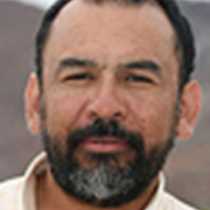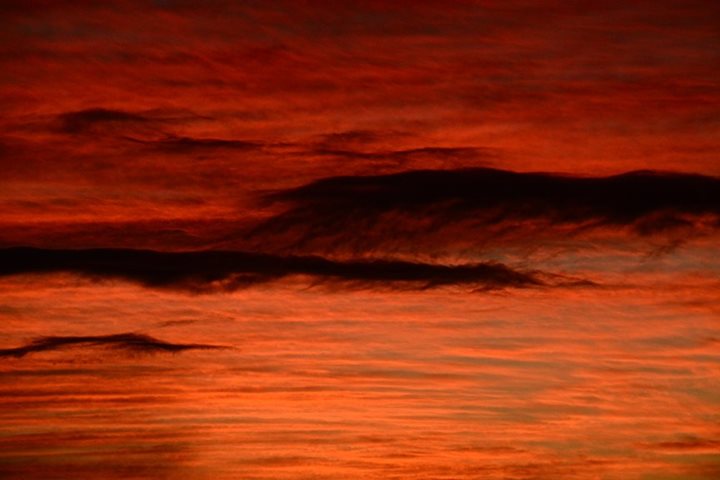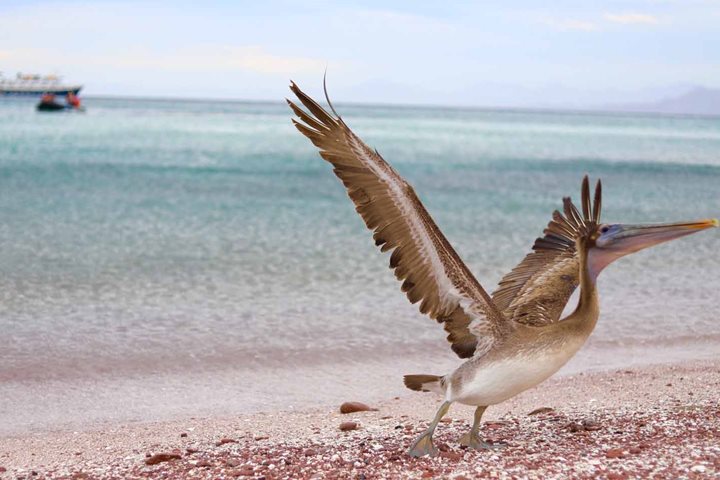The National Geographic Sea Bird slided gently southbound this morning from her night anchorage at Arroyo Encantado (San Jose Island) to today’s destination at Candelero Bay (Espiritu Santo Island). During the journey a group of long-beaked common dolphins joined the course of the ship, and later we added them to our list of observed marine and land mammals of this week.
Some time after the dolphins left us, our ship entered to the magnificent and deep harbor called Ensenada El Candelero (“Candelabra Bight”) where the anchor was dropped off. The scenery here is among the most beautiful of the islands of the Gulf of California and consists of high, vertical rocky cliffs painted in intense pink, orange, and yellow, and surround emerald-colored waters, a unique combination of the two most powerful forces on the planet—the sea and the moving earth. These oposite forces, that created the outrageous shapes of El Candelero, left deep canyons everywhere, offering the possibility of exploration. We did so in the morning.
Some guests and naturalists engaged in a long hike along Arroyo Mezteño, which is a long, intermitent riverbed full of big boulders, vegetation, and extraordinary cretures, like the Espititu Santo endemic black jackrabbit, or the amazing banded rock lizard, which the party of brave, goat-like hikers found in the way up. This lizard, usually shy, hard to see and to approach, has an intrincate dorsal pattern of black dots and bands upon a green background. With a lot of care and patience, we maneged to get some photographs.
Other guests and staff where, at the same time, enjoying kayaking and snorkeling from the beach in contiguous, nice coves at El Candelero. After the lunch there was a presentation with photos about a project on chuckwallas, carried out in Rasa Island (also in the gulf) by a staff member. In the afternoon we disembarked for the last activity of our voage—snorkeling around an islet that offered the best conditions. Above the islet, yellow-footed gulls were establishing territories for the upcoming breeding season, whereas a peregrine falcon soared high in the sky in search for birds to prey on. It was windy, but the water was refreshing. It was perfect for saying goodbye to the “Aquarium of the World”—the Gulf of California.







